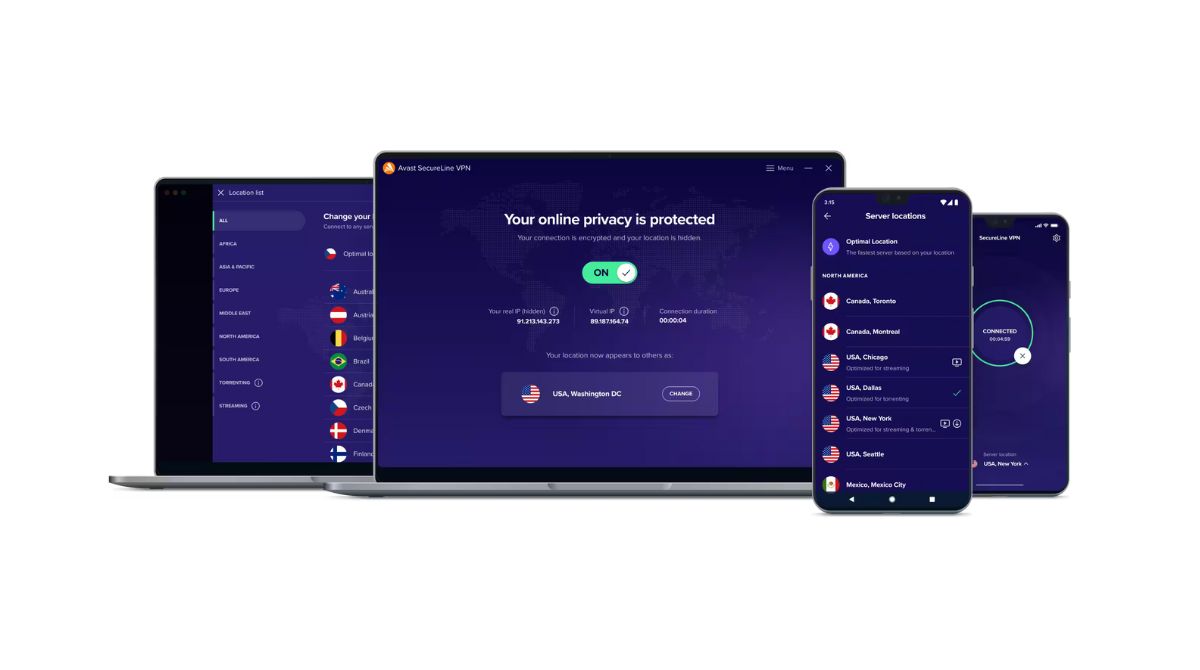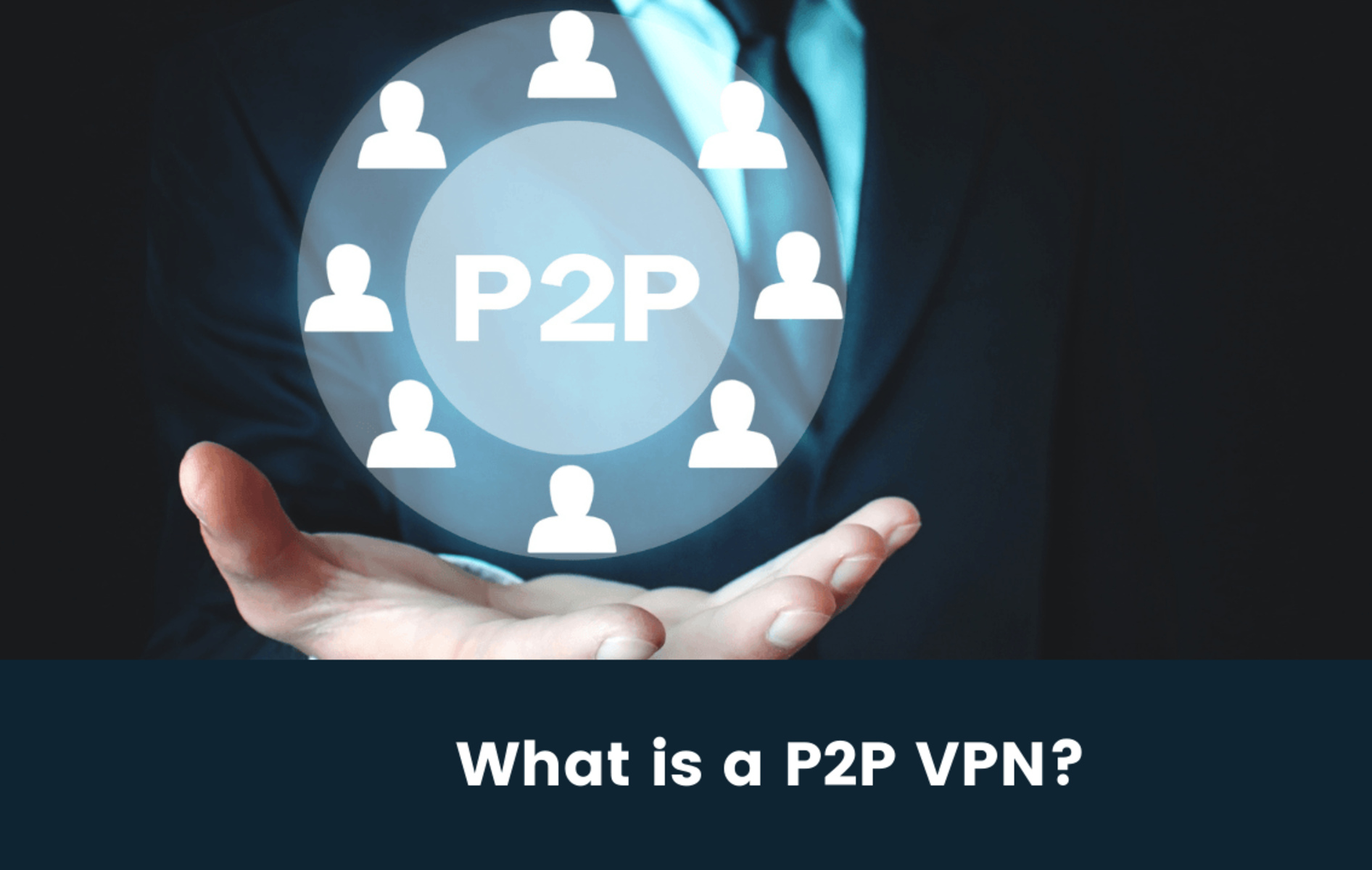Introduction
Encryption is a vital component of data security in today’s digital age. It involves converting information into a code that can only be deciphered by authorized parties. While encryption is generally implemented on centralized systems, peer-to-peer (P2P) encryption offers a unique and decentralized approach to data security.
P2P, short for peer-to-peer, refers to a network architecture where computers, or peers, are connected directly to each other without the need for a central server. This architecture enables efficient sharing of resources and files between peers. P2P networks have gained popularity due to their decentralized nature, which can provide greater privacy and freedom from censorship.
P2P encryption combines the principles of encryption and peer-to-peer networks to provide secure communication and file sharing between peers. It ensures that data transmitted between peers is protected from unauthorized access, interception, or tampering. P2P encryption algorithms employ various cryptographic techniques to ensure the confidentiality, integrity, and authenticity of the exchanged data.
Unlike traditional encryption methods, where data is typically encrypted and decrypted by a centralized authority, P2P encryption distributes this responsibility among the participating peers. Each peer actively participates in the encryption and decryption process, eliminating the need for a central authority or key management system.
When a peer initiates communication or file sharing with another peer in a P2P network, the data is encrypted using a shared key or a key exchange protocol. This ensures that only the intended recipient can decrypt and access the data. The decentralized nature of P2P networks makes it harder for malicious actors to intercept or tamper with the data, as there is no central point of vulnerability.
P2P encryption offers several benefits, including enhanced security, privacy, and resilience. It allows individuals and organizations to securely share information, collaborate, and communicate without the need for a centralized infrastructure. However, it is also important to understand the drawbacks and limitations associated with P2P encryption, as it may not be suitable for every use case.
What is Encryption?
Encryption is a fundamental concept in the field of data security that involves transforming plaintext or readable data into ciphertext, which is incomprehensible to anyone who doesn’t possess the decryption key. It is essentially a way to protect sensitive and confidential information from unauthorized access or interception.
The process of encryption follows a specific algorithm that applies mathematical functions and operations to convert the original data into an encrypted form. Only individuals or systems with the corresponding decryption key can reverse the process and retrieve the original plaintext data.
Encryption plays a crucial role in ensuring the confidentiality and integrity of data, both at rest and in transit. It is widely used in various applications, such as secure communication, secure storage of sensitive information, financial transactions, and protecting intellectual property.
There are two primary types of encryption algorithms: symmetric key encryption and public key encryption.
- Symmetric key encryption: In symmetric key encryption, the same key is used for both encryption and decryption. The key is shared between the sender and the recipient in advance. This method is relatively fast and efficient, making it suitable for applications where data needs to be encrypted and decrypted frequently.
- Public key encryption: Public key encryption, also known as asymmetric encryption, uses a pair of mathematically related keys: a public key and a private key. The public key is widely distributed and used for encryption, while the private key, which must be kept secret, is used for decryption. This method is useful for securely exchanging information without requiring a pre-shared key.
Furthermore, encryption algorithms are classified into different categories based on their key sizes and encryption strengths. Examples include Advanced Encryption Standard (AES), Data Encryption Standard (DES), and Rivest-Shamir-Adleman (RSA) algorithm.
Encryption is an essential component of modern cybersecurity measures and is critical for protecting sensitive data from unauthorized access or theft. It provides individuals and organizations with peace of mind when transmitting or storing valuable information, ensuring that it remains confidential and secure even in the face of potential threats.
What is P2P?
P2P, short for peer-to-peer, refers to a network architecture where computers, or peers, are connected directly to each other without the need for a central server. In a P2P network, each peer can act as both a client and a server, allowing for the distribution of resources and services among the participants.
The concept of P2P originated from the desire to create decentralized networks that enable efficient sharing of information, files, and computing resources. Unlike traditional client-server networks, where a central server mediates communication between clients, P2P networks rely on the collaboration and interconnection of peers to achieve their objectives.
In a P2P network, peers can directly communicate with each other, share files, and contribute resources to the network. This decentralized structure not only promotes resource efficiency but also enhances privacy and freedom from censorship.
One of the key advantages of P2P networks is their ability to scale easily. As more peers join the network, the available resources and services increase, making it resilient and able to handle high levels of traffic. Additionally, failures or disruptions on one peer do not necessarily affect the entire network since data and services can be distributed across multiple peers.
P2P networks have gained popularity through various applications, such as file sharing platforms like BitTorrent, where users can download files directly from other users’ computers instead of relying on a central server. P2P networks are also utilized in content delivery networks (CDNs) to distribute content efficiently across geographically dispersed users.
However, P2P networks are not without challenges. Maintaining security and trust can be more complex in a decentralized environment, as there is no central authority to enforce rules or address malicious activities. Additionally, the efficiency of a P2P network is highly dependent on the willingness of peers to contribute resources and participate actively.
Despite these challenges, P2P networks continue to evolve and find applications in various domains, from communication protocols to distributed computing. Their decentralized nature and ability to facilitate direct peer-to-peer interactions make them an attractive alternative to traditional client-server architectures.
What is P2P Encryption?
P2P encryption combines the principles of encryption and peer-to-peer networks to provide secure communication and file sharing between peers. It ensures that data transmitted between peers is protected from unauthorized access, interception, or tampering.
Unlike traditional encryption methods, where data is typically encrypted and decrypted by a centralized authority, P2P encryption distributes this responsibility among the participating peers. Each peer actively participates in the encryption and decryption process, eliminating the need for a central authority or key management system.
When a peer initiates communication or file sharing with another peer in a P2P network, the data is encrypted using a shared key or a key exchange protocol. This ensures that only the intended recipient can decrypt and access the data. The decentralized nature of P2P networks makes it harder for malicious actors to intercept or tamper with the data, as there is no central point of vulnerability.
P2P encryption algorithms employ various cryptographic techniques to ensure the confidentiality, integrity, and authenticity of the exchanged data. These techniques may include symmetric key encryption, public key encryption, message authentication codes (MAC), digital signatures, and hash functions.
With P2P encryption, individuals and organizations can securely exchange sensitive information, collaborate on projects, and share files without relying on a central authority or server. It provides an additional layer of security, ensuring that data remains confidential and protected from unauthorized access.
Furthermore, P2P encryption can also enhance privacy by reducing the risk of surveillance and interception. Since the data is encrypted and transmitted directly between peers, there is less exposure to potential eavesdropping or monitoring by third parties.
However, it’s important to note that while P2P encryption can offer enhanced security, it does not guarantee absolute protection. The strength of the encryption algorithm and the security practices of the participating peers can significantly impact the overall security of the P2P network.
Despite its challenges, P2P encryption continues to be an important aspect of secure communication and file sharing. Its decentralized nature and ability to distribute the encryption and decryption processes among peers make it an appealing option for individuals and organizations looking for secure and private data exchange.
How does P2P Encryption work?
P2P encryption combines the decentralized nature of peer-to-peer networks with the security measures of encryption to ensure secure communication and file sharing between peers. The process involves several steps to protect the confidentiality, integrity, and authenticity of the exchanged data.
Here is a high-level overview of how P2P encryption works:
- Key Generation: Before initiating communication or file sharing, peers generate encryption keys. These keys can be symmetric (shared) or asymmetric (public/private key pairs), depending on the encryption algorithm used.
- Data Encryption: When a peer wants to send data to another peer, it encrypts the data using the recipient’s public key or a shared key. This ensures that only the intended recipient can decrypt and access the data.
- Data Transmission: Once the data is encrypted, the sending peer transmits it to the recipient peer through the P2P network. The data may be broken down into smaller pieces, or packets, for efficient transmission and routing.
- Data Decryption: Upon receiving the encrypted data, the recipient peer decrypts the data using their private key (in the case of public key encryption) or the shared key (in the case of symmetric key encryption).
- Data Validation: After decryption, the recipient peer verifies the integrity and authenticity of the data. This may involve checking digital signatures, comparing hash values, or using message authentication codes (MAC) to ensure that the data has not been tampered with during transmission.
In a P2P network, each peer acts as both a sender and a receiver of encrypted data. This decentralized approach to encryption ensures that there is no single point of vulnerability or reliance on a central authority to facilitate secure communication.
It’s important to note that the choice of encryption algorithm and the strength of the encryption keys play a crucial role in the overall security of P2P encryption. Peers must use robust encryption algorithms and secure key management practices to ensure the confidentiality of the data.
Moreover, P2P encryption also relies on the underlying infrastructure of the peer-to-peer network to facilitate the transmission of encrypted data. The network must be resilient, secure, and capable of efficiently routing encrypted packets between peers.
By combining encryption with the decentralized nature of peer-to-peer networks, P2P encryption provides a secure and efficient method for communication and file sharing between peers, protecting sensitive information from unauthorized access and ensuring privacy.
Benefits of P2P Encryption
P2P encryption offers several benefits in terms of security, privacy, and data exchange. Here are some of the key advantages of using P2P encryption:
- Enhanced Security: P2P encryption provides an additional layer of security by encrypting data at the source and decrypting it at the destination. This ensures that sensitive information remains confidential and protected from unauthorized access or interception.
- Decentralized Structure: Unlike traditional client-server architectures, P2P networks distribute the encryption and decryption processes among participating peers. This decentralized structure reduces the risk of a single point of failure or vulnerability, making it harder for malicious actors to compromise the data.
- Privacy Protection: P2P encryption can enhance privacy by reducing the exposure of data to third parties. Since data is encrypted and transmitted directly between peers, there is less risk of surveillance or monitoring by external entities.
- Resilience and Scalability: P2P networks are inherently resilient and scalable. As more peers join the network, additional resources and services become available, making it more resilient to failures or disruptions. The decentralized nature of P2P encryption ensures that the network can handle high levels of traffic efficiently.
- Reduced Reliance on Central Authorities: P2P encryption eliminates the need for a centralized authority or server to mediate communication and data exchange. This reduces dependence on third-party entities and allows for more direct and efficient peer-to-peer interactions.
- Collaboration and File Sharing: P2P encryption enables secure collaboration and file sharing among peers. Individuals and organizations can share sensitive information, collaborate on projects, and exchange files without the need for a central infrastructure or relying on external servers.
- Freedom from Censorship: P2P networks can provide greater freedom from censorship due to their decentralized nature. Since there is no central authority controlling the network, it becomes more challenging for censoring entities to restrict or manipulate the communication and exchange of information between peers.
These benefits make P2P encryption an attractive option for individuals and organizations looking for secure and private data exchange. However, it is important to assess the specific requirements and potential limitations of P2P encryption in each use case to ensure its suitability and effectiveness.
Drawbacks of P2P Encryption
While P2P encryption offers several benefits in terms of security and privacy, there are also some drawbacks and considerations to keep in mind. These drawbacks include:
- Key Management: P2P encryption requires peers to manage encryption keys effectively. This includes securely generating, distributing, and storing keys. Ensuring the integrity and confidentiality of keys can be challenging, especially in a decentralized environment.
- Trustworthiness of Peers: The security of P2P encryption relies on the trustworthiness and security practices of the participating peers. If a peer becomes compromised or is operated by a malicious entity, it can potentially undermine the security of the entire network.
- Compatibility and Interoperability: P2P encryption protocols and algorithms used by different peers may vary, potentially leading to compatibility and interoperability issues. Peers must ensure they can communicate and exchange encrypted data effectively, which may require additional configuration or standardization efforts.
- Potential for Misuse: P2P encryption can be used to facilitate illegal activities, such as piracy or the exchange of illicit content. This misuse can lead to legal implications and could tarnish the reputation of P2P networks as a whole.
- Network Performance: P2P networks rely on the contributions of participating peers to relay data between each other. In some cases, this can introduce latency and affect network performance, especially if peers have limited bandwidth or are located far from each other.
- Security Challenges: While P2P encryption provides enhanced security compared to traditional networks, it is not immune to all security threats. Attacks such as man-in-the-middle attacks, distributed denial-of-service (DDoS) attacks, or sybil attacks can still pose risks and require appropriate security measures to mitigate.
- Lack of Central Authority: The absence of a central authority in P2P networks can make it challenging to enforce rules or address malicious activities. Without a governing body, it may be more difficult to mitigate issues such as spam, malware, or network abuse.
Understanding these drawbacks is crucial when considering the use of P2P encryption in specific applications. It is important to assess the potential risks and implement appropriate safeguards and security measures to mitigate these challenges effectively.
Examples of P2P Encryption Applications
P2P encryption finds applications in various domains, offering secure and decentralized communication and file-sharing capabilities. Some notable examples of P2P encryption applications include:
- BitTorrent: BitTorrent is one of the most well-known P2P file-sharing platforms. It utilizes P2P encryption to enable users to download files directly from other users’ computers, bypassing the need for a central server. The encryption ensures the privacy and integrity of the shared files.
- Signal: Signal is a popular messaging app that incorporates P2P encryption to provide end-to-end encrypted communication. Messages and calls are encrypted and can only be accessed by the intended recipients, providing users with enhanced privacy and security.
- I2P: The Invisible Internet Project (I2P) is an anonymous and decentralized network that uses P2P encryption techniques. I2P enables users to browse websites, send emails, and chat securely while maintaining their anonymity and avoiding censorship.
- Tribler: Tribler is a P2P client that incorporates encryption to enable anonymous torrent downloading. It utilizes P2P network structures to enhance privacy and security in file-sharing activities.
- RetroShare: RetroShare is a decentralized communication platform that uses P2P encryption to provide secure instant messaging, file sharing, and secure email. It allows users to create encrypted connections with trusted peers, ensuring privacy and secure communication.
- Resilio Sync: Formerly known as BitTorrent Sync, Resilio Sync utilizes P2P encryption to synchronize files across various devices. The encryption ensures that data remains secure and protected during the synchronization process.
These are just a few examples of how P2P encryption is applied in various applications to provide secure and decentralized communication and file-sharing capabilities. The use of P2P encryption has become increasingly popular as individuals and organizations seek to protect their data privacy and ensure secure data exchange without relying on centralized infrastructure.
Conclusion
P2P encryption combines the principles of encryption and peer-to-peer networks to enable secure communication and file sharing between peers. By distributing the encryption and decryption responsibilities among participating peers, P2P encryption enhances security and privacy while reducing reliance on centralized authorities.
Through P2P encryption, data transmitted between peers is protected from unauthorized access, interception, or tampering. The decentralized nature of P2P networks makes it harder for malicious actors to compromise the data, as there is no single point of vulnerability. Additionally, P2P encryption allows for secure collaboration, file sharing, and communication without the need for a centralized infrastructure or server.
While P2P encryption offers numerous benefits, it is essential to consider the potential drawbacks and challenges associated with this approach. Peers must effectively manage encryption keys, ensure the trustworthiness of participating peers, address compatibility issues, and mitigate potential network performance impacts.
Examples of P2P encryption applications include BitTorrent for file sharing, Signal for encrypted messaging, I2P for anonymous browsing, and Tribler for anonymous torrent downloading. These applications utilize P2P encryption to provide secure and decentralized functionalities in their respective domains.
P2P encryption continues to be an important aspect of data security and privacy, offering an alternative to traditional client-server architectures. As technology advances and cybersecurity threats evolve, P2P encryption provides individuals and organizations with a decentralized and secure method for exchanging information and collaborating without compromising data integrity and confidentiality.

























